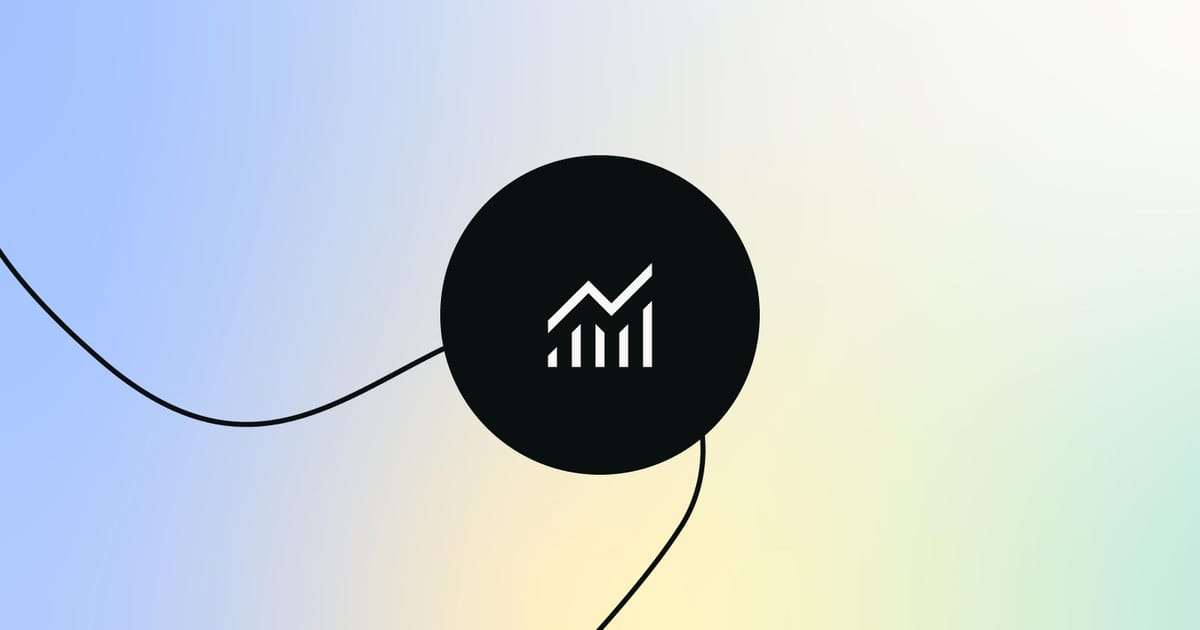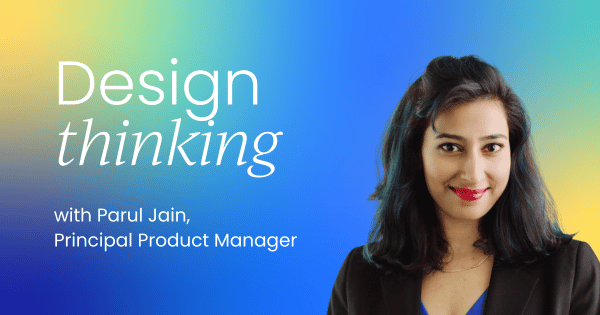Are you familiar with design thinking?
This buzzword has been around for years now – it's thrown around in leadership meetings and innovation workshops as if it's the secret sauce to all problems.
Product managers hear it so often, they probably dream about it. 💭
But, beyond the hype, do we really know how to embrace and apply the design thinking mindset?
This article explores practical strategies for product leaders to ensure design thinking remains a driving force in daily decision-making rather than a one-time exercise.
What is design thinking?
While originally rooted in the design function, the mindset and frameworks of design thinking have evolved beyond traditional design roles.
Today, they are just as critical for product leaders who must balance user needs, business goals, and execution realities. Despite its growing adoption, design thinking often remains confined to the ideation phase.
The challenge is not in understanding the concept but in embedding it throughout the entire product lifecycle.

When innovation fails to connect
The problem
Early in my career, I worked on a high-tech product in its MVP phase.
Leadership was eager to implement a cutting-edge solution, convinced that efficiency gains alone would drive adoption. They were so focused on the technology’s potential that they skipped validating actual user behavior.
The assumption? If it saved money at scale, users would naturally embrace it.
This was an internal product aimed at improving operational efficiencies within the company ecosystem. As a result, user empathy and user-centricity took a backseat. The focus was on business impact rather than the day-to-day experience of those expected to use the tool.
Once the MVP launched, reality hit hard.
Leadership saw the product as a cost-saving game-changer, but the employees saw it as another burden. Resistant to change, they viewed the tool as an obstacle rather than an enabler.
The top-down mandate wasn’t working—adoption stalled.
The solution
When I joined, I challenged the approach: Why did we prioritize the business case over the user problem?
Instead of pushing more features or forcing compliance, I turned to empathy mapping to uncover the real barriers to adoption. I met with the users and conducted candid user interviews promising anonymity.
The key insight: employees didn't reject the tool for lack of functionality—they feared the new technology. They were skeptical about the unknown implications and potential job threats.
With this understanding, I shifted my approach using behavioral design thinking principles. I crafted a targeted communication strategy, positioning the technology as an enabler, not a threat.
Through open conversations, training sessions, and iterative feedback loops, I helped reframe the narrative. Users began to see how the tool could ease their workload rather than complicate it. Adoption rates improved, and leadership realized that technology-driven change requires user-centric execution, not just top-down decisions.
Key takeaway
This experience wasn’t an isolated failure—it’s a recurring theme in large organizations.
Leaders frequently talk about user-centricity, but without embedding design thinking beyond ideation, execution often falls short. Even seasoned product leaders don’t always have the final say when leadership is fixated on a direction.
However, by integrating human-centered principles into stakeholder management and daily decision-making, we can bridge the gap between vision and execution.

How to sustain design thinking
Clarifying the problem before scaling
A common pitfall in product development is rushing to solutions without fully understanding the problem. Product leaders can integrate problem framing into their practice to prevent misalignment.
- Problem framing workshops – Before scaling a feature, ensure teams define the core problem. Asking, “What is the real friction we need to solve?” keeps solutions aligned with real needs.
- Customer journey mapping – Mapping end-to-end experiences helps uncover pain points beyond what users explicitly report.
- Jobs-to-be-done (JTBD) framework – Instead of focusing on user demographics, identify the functional, emotional, and social "jobs" customers need the product to fulfill.
Keeping customer-centricity in execution
As products evolve, customer needs must remain at the forefront. Design thinking isn’t just about discovery—it should guide product execution and scaling.
Here are some ways you can identify customer needs:
- Surveys and questionnaires – Tailored surveys can collect broad feedback efficiently from a large number of users
- Feedback portals – Dedicated portals allow users to submit issues and suggestions continuously
- Analytics and data insights – Leveraging usage data can reveal patterns and trends in user behavior that highlight pain points
- Community forums – Engaging with user communities can surface valuable insights through discussions and shared experiences
- Observational research – Watching how users interact with workflows often uncovers hidden inefficiencies
- Pain point prioritization – Rank customer issues based on business impact and frustration levels to drive better decision-making
Using JTBD to guide roadmap decisions
After launch, teams often fall into the trap of chasing feature requests rather than solving meaningful problems. The JTBD framework ensures roadmaps align with real customer needs.
- Identify what users are trying to accomplish (functionally, emotionally, and socially)
- Prioritize features that help users achieve those goals instead of just adding more functionality
- Resist the urge to mimic competitors—focus on solving your users’ core jobs
By framing product decisions around customer jobs, product leaders create stronger engagement and retention.

Validating with continuous experimentation
Successful product organizations don’t just launch and hope for the best—they test, iterate, and adapt. Design thinking thrives in a culture of continuous learning.
Validate your solution using:
- Hypothesis-driven development (HDD) – Before launching a feature, state assumptions in a testable format: “We believe that [change] will result in [impact] for [users]”
- A/B Testing at Scale – Go beyond UI tweaks—validate engagement models, pricing strategies, and workflow changes
- Data-informed iterations – Blend qualitative research with quantitative testing to make decisions rooted in both empathy and evidence
Integrating design thinking into agile & OKRs
Design thinking shouldn’t be separate from execution. It should be embedded into Agile workflows and goal-setting frameworks like OKRs.
- Discovery Sprints – Dedicate 1-2 weeks to problem validation before committing to a full sprint backlog
- Customer-Centric OKRs – Instead of “Ship Feature X,” reframe objectives around customer outcomes like “Reduce onboarding friction by 20%”
- Retrospectives with a Design Thinking Lens – Ask, “Did we fully understand the problem before launching this solution?”
By weaving design thinking into Agile and OKRs, product leaders ensure it shapes execution, not just strategy.

Making design thinking a daily habit
For design thinking to truly stick, it must become part of daily product work. Product leaders play a critical role in fostering this mindset.
As a leader ensure you:
- Lead by example – Approach decision-making with a problem-first mindset
- Upskill teams – Integrate design thinking methods into onboarding and training
- Encourage direct user engagement – Push teams to get closer to customers through interviews, field visits, and feedback loops
Design Thinking should extend beyond ideation to maintain a customer-first mindset during execution.
By integrating problem framing, empathy mapping, JTBD, experimentation, and execution-driven design, product leaders can bridge the gap between vision and reality.
The best product managers don’t just build features—they drive continuous learning, iteration, and user-centric decision-making. As businesses increasingly recognize the value of design thinking, those who embed it into daily workflows, not just innovation workshops, will shape the future of product leadership.

Final thoughts
Product leaders have a unique opportunity to ensure that customer-centric principles and design thinking remain at the heart of product development throughout the entire lifecycle.
This means continually revisiting and validating customer needs, adapting solutions based on real-world feedback, and fostering a culture where user experience drives every decision.
By doing so, not only are products and services more likely to succeed, but teams are empowered to innovate with a clear sense of purpose and connection to those they serve.
To truly champion customer-centricity and design thinking, product leaders must lead by example, integrating these principles into daily practices, from strategic planning to the minutest execution details.
🤔 How are you ensuring design thinking stays at the core of your product decisions—beyond just the ideation phase?



 Follow us on LinkedIn
Follow us on LinkedIn








